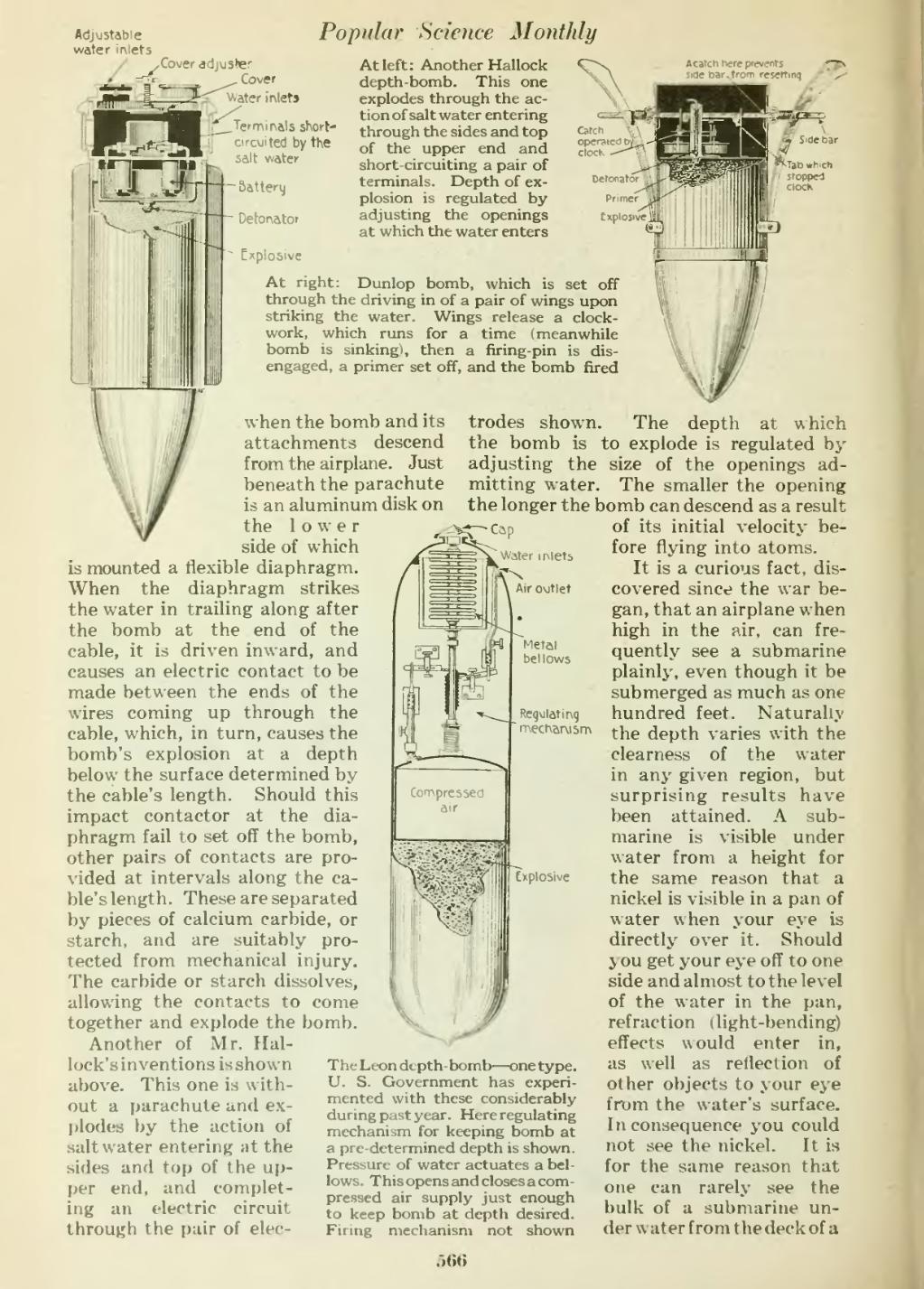Adjustable water irxlets
��/Cover ddjvjster
Cover
���ater inlets
��Terminals short- circyited by the salt water
Sattery
Detor^atof
Explosive
��Popular Science Monthly
��At left: Another Hallock depth-bomb. This one explodes through the ac- tion of salt water entering through the sides and top of the upper end and short-circuiting a pair of terminals. Depth of ex- plosion is regulated by adjusting the openings at which the water enters
��At right: Dunlop bomb, which is set off through the driving in of a pair of wings upon striking the water. Wings release a clock- work, which runs for a time (meanwhile bomb is sinking), then a firing-pin is dis- engaged, a primer set off, and the bomb fired
���when the bomb and its attachments descend from the airplane. Just beneath the parachute is an aluminum disk on the lower side of which is mounted a flexible diaphragm. When the diaphragm strikes the water in trailing along after the bomb at the end of the cable, it is driven inward, and causes an electric contact to be made between the ends of the wires coming up through the cable, which, in turn, causes the bomb's explosion at a depth below the surface determined by the cable's length. Should this impact contactor at the dia- phragm fail to set off the bomb, other pairs of contacts are pro- vided at intervals along the ca- ble's length. These are separated by pieces of calcium carbide, or starch, and are suitably pro- tected from mechanical injury. The carbide or starch dissolves, allowing the contacts to come together and explode the bomb.
Another of Mr. Hal- lock's inventions is shown above. This one is with- out a parachute and ex- plodes by the action of saltwater entering at the sides and top of the up- per end, and complet- ing an electric circuit through the pair of elec-
��ReqMlatinq rr,ect\an.ism
��The Leon depth-bomb — one type. U. S. Government has experi- mented with these considerably during past year. Here regulating mechanism for keeping bomb at a predetermined depth is shown. Pressure of water actuates a bel- lows. This opens and closes a com- pressed air supply just enough to keep bomb at depth desired. Firing meclianism not shown
��trodes shown. The depth at which the bomb is to explode is regulated by adjusting the size of the openings ad- mitting water. The smaller the opening the longer the bomb can descend as a result of its initial velocity be- fore flying into atoms.
It is a curious fact, dis- covered sinct? the war be- gan, that an airplane when high in the air, can fre- quently see a submarine plainly, even though it be submerged as much as one hundred feet. Naturally the depth varies with the clearness of the water in any given region, but surprising results have been attained. A sub- marine is visible under water from a height for the same reason that a nickel is visible in a pan of water when your eye is directly over it. Should you get your eye off to one side and almost to the level of the water in the pan, refraction i light-bending) effects would enter in, as well as reflection of other objects to your eye from the water's surface. Inconsequence you could not see the nickel. It is for the same reason that one can rarely see the bulk of a submarine un- der water from t he deck of a
���xplosive
��566
�� �
